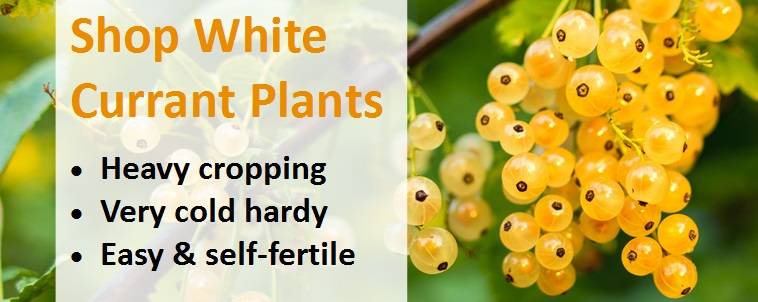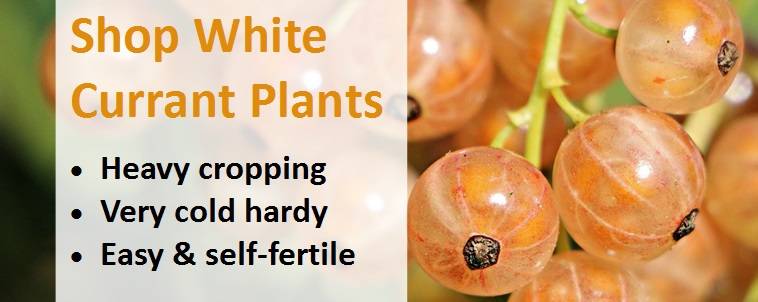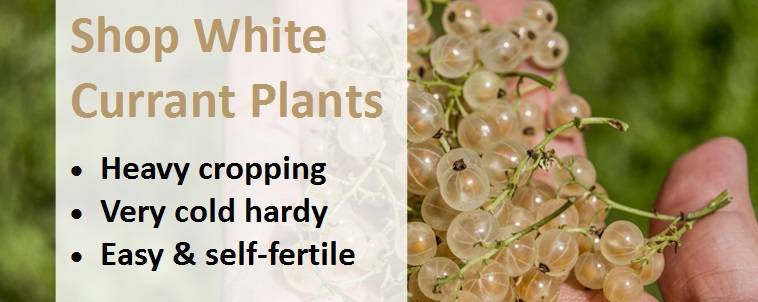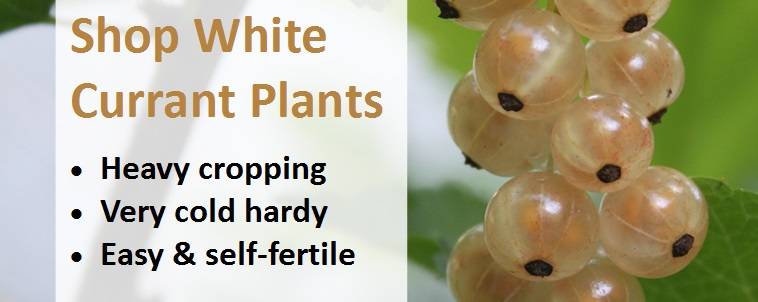How to Grow Your Own Whitecurrant Plants
Whitecurrants are heavy-cropping, easy-to-grow berry plants that are immensely rewarding to grow but less popular than other fruit such as raspberries and strawberry plants. Whitecurrants are self-fertile, so you don't need to worry about what to plant them with, and they do particularly well in colder northern regions. Whitecurrant plants are versatile and unfussy, succeeding in damp conditions (providing there is some drainage) and semi-shade, making them perfect for unproductive corners of your garden where other plants do not succeed. Like redcurrant plants, whitecurrants are fully hardy, making them suitable for colder parts of the garden (just not frost pockets). Productive for up to 20 years after planting, whitecurrants are a high yielding crop which take relatively little effort, space and expense.
Recommended Whitecurrant Variety
The best whitecurrant variety is:
Whitecurrant White Versailles (syn. Whitecurrant Versailles Blanche) - this is a self-fertile, heavy-cropping, deciduous white current with small, pale green spring flowers and a very reliable crop of berries year after year. It produces masses of large, shiny, soft pale yellowish-white berries which are produced in long, heavy trusses at the base of the previous year's wood and ripen in mid- to late summer. It's vigorous, upright, bushy growth habit and arching canes makes it easy to train as an espalier, fan or low ornamental hedge.
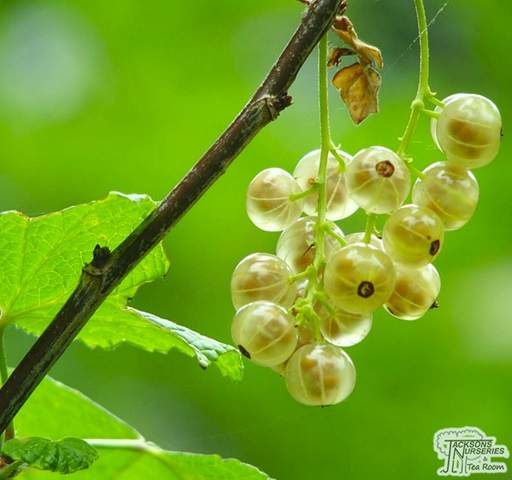
Alternatively, if you're also considering a redcurrant, look no further than Redcurrant Red Lake which bears an abundance of large, well-flavoured berries on long trusses between July and August.
Fruit
Whitecurrant bushes will yield a bumper crop if properly cared for - mature plants produce up to 3-4kg (6-9lb) of nutritious fruit. Berries are borne in large clusters of 10-15 on fruiting spurs, making them easy to pick and giving them a high ornamental value if you prefer to leave them on the plant. Currants are ready for harvesting in summer when the fruits are firm and juicy. The advantage of white and red currants over black is that they have thinner skins and are usually sweet enough to be eaten raw.
Culinary Uses
Whitecurrants are rich in vitamin C and anti-oxidants with a high pectin content which makes them ideal for making jams and jellies. The fruits, when ripe, are not really white but a very pale peachy colour and jams or jellies made from them with have a warm pink colour. They are tasty eaten raw once fully ripe, perhaps with a little sugar added or mixed into a fruit salad. Whitecurrants make tasty syrups or pies and work well as part of a fruit compote; although our personal recommendation is whitecurrant fruit tart with elderflower custard.
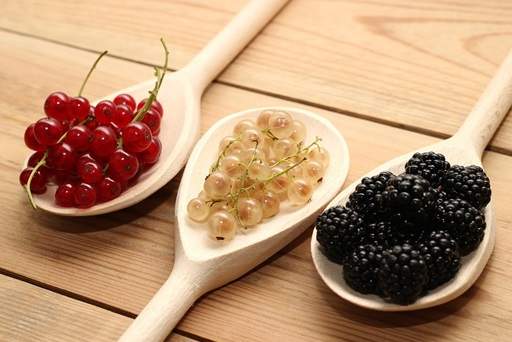
Whitecurrants are also great for decorating puddings, ice cream, cakes, tarlets and flans. For puddings and ice cream, carefully wash whole clusters of fruit and lay them onto dry pieces of kitchen roll. Gently place the clusters into suitable freezer containers (not bags) keeping each truss of berries separate from one another. The frozen fruits will then look fantastic draped over sorbets, cold puddings or ice cream just before serving. For decorating cakes, tartlets and flans, once you'd laid whole clusters of fruit onto kitchen paper, brush each berry with egg white, ensuring all the fruit has been coated. Then, sprinkle sugar over the fruit until each berry is fully covered. Lay on a foil-covered tray to dry and the fruits will keep for 3-5 days before being used as a dessert decoration.
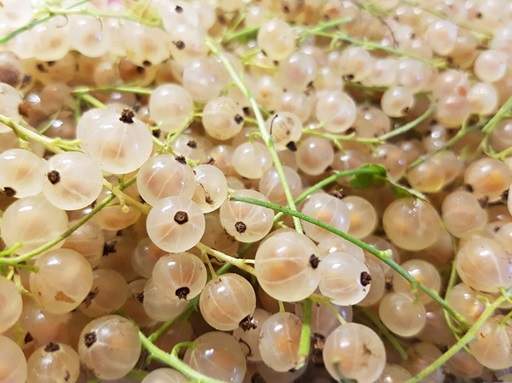
Planting Advice
When to Plant
Containerised whitecurrant plants can be planted at any time of the year, but it is best to avoid very hot or very cold weather. The best time to plant to allow for strong establishment is from November to the end of February. Containerised plants can be kept in the pot for several weeks (if watered regularly) but are best planted as soon as possible if the conditions permit. Bare root bushes should be planted during the dormant season between November and March. Bare root plants should be planted as soon as possible after delivery. If this is not possible, heel them into a spare patch of soil until the conditions allow and you are ready to plant.
Soil
Whitecurrants will grow in almost any soil, providing it is not alkaline and has some drainage. A moist, neutral to slightly acidic soil with some drainage is considered ideal. If you have a poor or sandy soil, dig in plenty of well rotted compost or manure and apply a couple of generous handfuls of bonemeal when planting. This improves water retention (whitecurrants like lots of moisture) and provides essential nutrients to make your whitecurrant plants thrive.
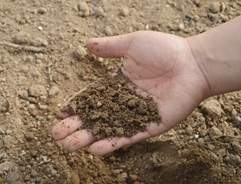
Aspect
Whilst a sunny spot is ideal and results in sweeter-tasting fruits, whitecurrants will still crop well in semi-shade. Currants grown in partial shade will just take a week or two longer to ripen. Whitecurrants are hardier than most other fruit, but should still be situated in a sheltered position protected from strong or cold/drying winds; they need moisture to produce large fruit and drying winds affect berry size and may damage the foliage. Frost pockets should be avoided. Whitecurrants can be grown against a north-facing wall and make an attractive cover in these circumstances, but the fruit will ripen later and may be less sweet.

Spacing
Space whitecurrants 1.5m apart with the same distance between rows to allow plants to expand to their full size at maturity. If you're short on space you can grow cordons, being a single stem, spaced 50cm apart. To do this simply prune out all the stems to leave just one single, central leader as a framework. The planting distance should be increased to 2m for fans to allow plenty of room for training the leading branches.
Planting
Keep the roots of your whitecurrant plants damp before planting, but do not leave the rootball entirely immersed in water as they drown. When you're ready to plant, dig a hole plenty big enough for the whitecurrant plant's roots such that the crown finishes 4-5cm (1-2 inches) below soil level. If planting a containerised specimen, gently tease out the roots and cut back any damaged roots before planting. Briefly dunk the roots in a bucket of water before planting and mix a couple of handfuls of blood, fish and bone into the top soil when backfilling to provide your whitecurrants with the nutrients they need to make a strong start. Firm the soil down to eliminate air pockets and water well after planting.
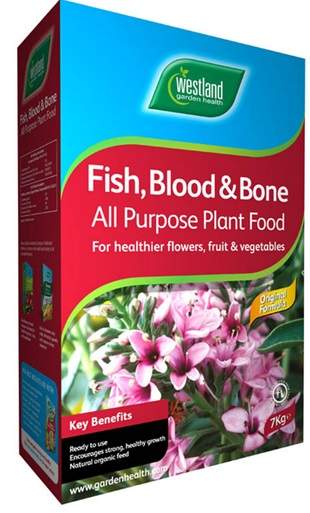
Container Growing Whitecurrant Plants
An alternative is to plant your whitecurrant in a container using a loam based compost such as John Innes No 3 (multi-purpose will do as an alternative). Choose a large, wide container as whitecurrants have a shallow, spreading root system. A pot depth of 40cm is sufficient; the width of the container is more important and we recommend 60cm (2 feet) as a minimum. The larger the pot, the better its water retention will be and therefore the less often you'll need to water your whitecurrant plants. Fan-trained trees in particular work well in large tubs, e.g. half barrels to give a natural appearance.
Initial Pruning and Watering
Cut back any branches less than 15-20cm above ground level to encourage the bush to develop a short 'leg' (short single trunk just above ground level before branching occurs). Prune all other branches to an outward-facing bud at around one-third of their original length. Whitecurrants will require frequent watering in the first summer until their roots are well-established.
Training
Currants are usually grown as free-standing bushes, but they can also be pruned into single or double cordons, espaliers or fans. Their use as a free-standing bush is most common, for which formative pruning is important and should aim to establish a 15-20cm (6-8 inch) 'leg' so the long branches don't drag on the ground under the weight of the fruit. Whitecurrants can crop so heavily in good years that the branches may bend or break. At times like this, support the branches by tying them to stakes, canes or wires. Given that whitecurrant bushes grow erect, they don't particularly need support structures at other times of the year, although some people choose to have one in place all-year round so it's ready when the fruiting season arrives. Options include growing against wires, either secured against a wall or stretched between 2 posts. Tying lead branches to wires against a wall is one of the easiest ways to train your whitecurrant plant into a fan shape.
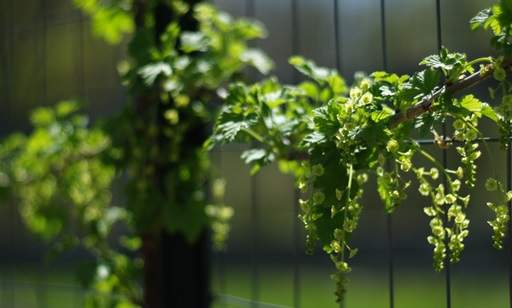
Whitecurrant grown as an espalier against a fence
If you're looking to grow your whitecurrant as a cordon with a head of fruiting branches at the top, it is important to support the leader and train it as a single stem to the top of a cane. Use a cane to support your whitecurrant plants and tie in the selected lead stem with string or soft twine. As the plant grows during its first year, tie the main stem in at regular intervals. Once the stem reaches your desired height (up to a maximum of about 2m), prune back the growing tip to a bud. Productive side-shoots will be produced by the cordon as it grows, which should be cut back to 2 buds from the main stem in July to encourage fruiting 'spurs'. Check the ties that support the main cordon stem every month to ensure they aren't getting too tight as the main stem thickens. Your cordon should fruit in the second year after planting.
Pruning
It's important to consider how fruits are produced on whitecurrant bushes when pruning. Whitecurrants fruit on spurs (stubby sideshoots) from the main stems, on two and three year old wood and at the base of new wood, so pruning is designed to encourage more of these. The aim of pruning is to maintain an open-centred, goblet-shaped bush comprising around 5-6 strong, well-spaced branches grown on a leg which is 15-20cm (6-8 inches) of bare stem from the ground up. This allows air to circulate, preventing diseases, and allows light to reach all parts of the plant. It also makes it a lot easier to pick the fruit at harvest time. Ideally, the branches should be equally split between one, two and three year old wood.
Most pruning should be done in late winter or early spring at a time when there is not a frost. The lead shoots of well-established plants should be cut back by one-third to an outward facing bud. Surplus shoots, especially those crowded in the middle of the bush, drooping down to the ground and dead, weak or damaged branches, should be removed. Prune any stems which are older than 3 years right back, as this wood will no longer be productive. At the same time, prune sideshoots back to 2 buds as this helps to promote a compact growth habit. This encourages new growth in the coming year which will bear fruit the year after. Finally, remove any suckers from the roots. Further "spur" pruning in early summer helps to encourage the growth of more fruiting spurs. This involves pruning new growth back to 5 leaves, pruning to an outward facing bud.
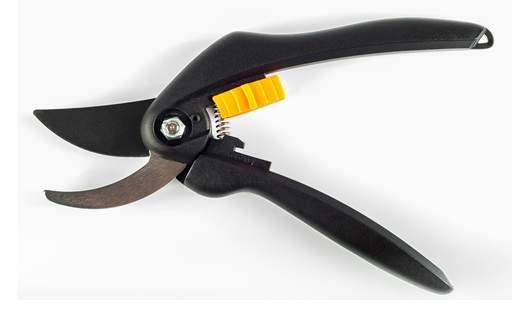
Established cordons should be pruned in early spring, reducing new growth on the main vertical stem by a quarter to the previous year's growth, or by a half if growth is weak. Once the cordon is at the desired height, cut to one bud of new growth each year in early summer. Prune the shoots from the main stem to one bud to build up a fruiting spur system. In winter, all side shoots should be pruned back to between 1 and 3 buds.
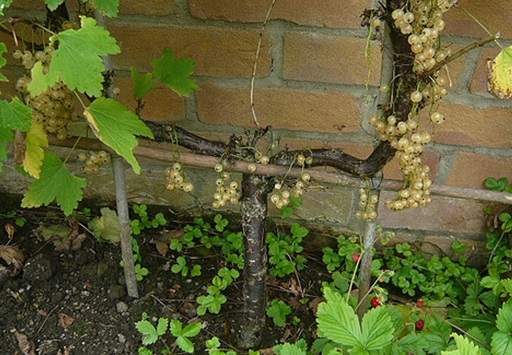
Whitecurrant trained as a double cordon
Pests & Diseases
The best whitecurrant plant variety for disease resistance is Whitecurrant White Versailles (syn. Whitecurrant Versailles Blanche) and if you follow our recommendations about plant spacing, pruning and mulching, you are unlikely to face any problems.
The most common whitecurrant pest is sawfly, with the first sign being leaves getting eaten by caterpillars. The easiest way to avoid sawfly damage is to destroy their eggs before they hatch. Eggs are laid towards the end of spring along the veins on the underside of the leaves, normally at the bottom of the plant towards the centre. The eggs are 1mm wide and long and light green. We recommend examining the leaves of your whitecurrant every week from mid-spring to check for eggs and destroy any you find. Following our formative pruning guidelines to create a 'leg' so your whitecurrant bush is raised 15-20cm (6-8 inches) off the ground makes it more difficult for sawfly to lay their eggs on the leaves. Maintaining an open, goblet-shaped bush also exposes the centre of the plant (deterring sawfly from laying eggs) and makes eggs that are laid easier to spot/remove. If you aren't able to catch the sawfly early and find they've hatched into caterpillars and are damaging your whitecurrants, hunt down the caterpillars and remove them, or use a bug killer spray.
Mildew can be a problem if the soil is too dry. This can be treated using a fungicide spray, although it's always preferable to keep the soil moist and apply a mulch to avoid the problem in the first instance. An alternative organic method is to spray with diluted washing up liquid mixed at 1 teaspoon per 2 litres of water or companion planting with flowers such as marigolds nearby.

Mildew on a whitecurrant bush
Coral Spot is less common, signified by coral pink spots on old or dead wood which causes these branches to die-back and can spread to other parts of the plant. The best solution is to cut off and burn infected wood to a point well past the infection, then paint the wounds with a sealant. Leaf spot is also rare, indicated by dark brown spots that appear on leaves which get larger until the whole leaf turns brown. The best solution is to remove and burn affected leaves and use a fungicide spray.
Be sure to protect your whitecurrants from preying birds. Birds like to eat both the developing buds of currant bushes in the winter and the fruits as they start to swell; bullfinches in particular are adept at eating fruit buds in the spring. Protect your whitecurrant plants before the fruits start to appear: a net loosely draped over canes will do, although a more permanent fruit cage is worth it if you have more than a few bushes.
Garden Care
Feeding
Spread a slow-release, multi-purpose fertiliser (one with a high potassium content is best as whitecurrants have a high need for potassium) or a couple of handfuls of blood, fish and bone around the base of your whitecurrant plants in late February, just before spring growth starts to commence, and again in October. This will improve the strength of your plants, increase your crop and result in an improved flavour. If you have a particularly poor soil, feeding more frequently may be beneficial. Container-grown whitecurrants should be fed every 2 weeks from late winter to early spring with a liquid feed.
Harvesting
Whitecurrants are typically ready for harvesting from July onwards in the UK, earlier than other fruits, although the timing depends on where you live and the variety you are growing. Whitecurrants are ready for harvesting in summer when the fruits and firm and juicy. All berries will not ripen at the same time, so pick every week during dry weather over the course of 2-3 weeks; if the fruits are wet they will not store well, but turn mouldy. Cut whole trusses off together using a clean pair of scissors, rather than trying to pick the berries individually. If using whitecurrants for jelly, we recommend picking them when slightly under-ripe as the fruit has more pectin at this stage, which allows the jelly to set better. Wait until they are fully ripe for everything else.
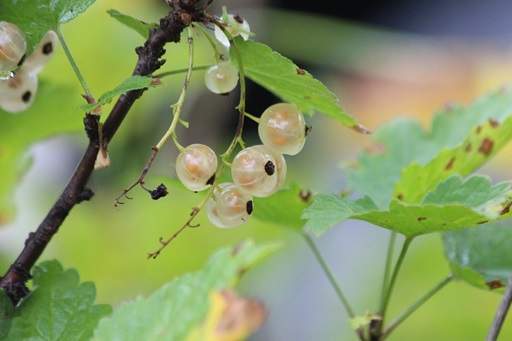
Weeding and Mulching
It's important to control weeds after planting to reduce competition for moisture and nutrients. Weed well in spring and at the same time apply a thick mulch of straw, garden compost, well-rotted manure, bark, stones, garden clippings or wood chip to help keep weeds at bay and preserve moisture. Organic matter will also eventually rot down and improve the ground. Ensure the mulch is spread around but does not touch the base of the plant. Avoid using a hoe to control weeds as this tool could easily damage the shallow rooting system of whitecurrant plants.
Watering
Whitecurrants are moisture hungry plants so will require watering during periods of dry weather, especially if grown in containers. The general rule is that lots of water applied occasionally is far better than a little water applied often, but be careful to temper the level of watering as the fruits start to swell as over-watering at this stage can cause them to split. Water less regularly after fruiting to prepare the bush for winter; watering in winter is seldom necessary. Pay extra attention to watering if you're growing your whitecurrants in containers.
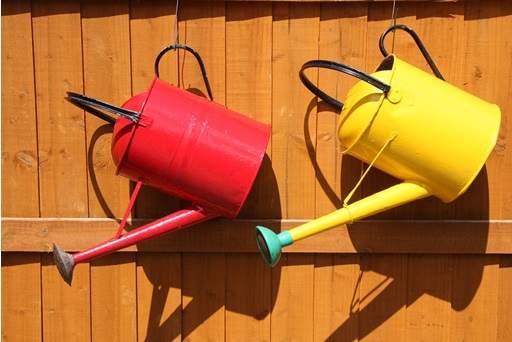
Container Grown Whitecurrants
Replacing the top couple of inches of compost with fresh potting compost mixed with slow-release fertiliser granules every spring will help regenerate the plant's nutrients. Look to re-pot every three to four years, even if into the same size container, removing about a third of the roots and compost. Do this carefully so as not to damage the roots. Place the container on 'feet'. This will allow excess water to flow out of the base of the container through the drainage holes and prevent the roots from rotting.
Share this page:

